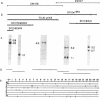Abstract
Ninety kilobase pairs (kb) of DNA have been isolated from the 3B region of the X chromosome of Drosophila melanogaster. Previous cytogenetic analyses have placed a gene required for rhythmic behavior (per) in this chromosomal interval. Physical characterization of a series of chromosomal rearrangements altering per locus activity indicates that DNA affecting behavioral rhythms is found in a 7.1-kb HindIII fragment. A single 4.5-kb poly(A)+ RNA is transcribed from this DNA in wild-type pupae and adult flies. The transcript is eliminated by a per mutant that retains some rhythmic activity, but this mutant substitutes two novel transcripts, 11.5 kb and 0.9 kb. It is suggested that the new poly(A)+ transcripts provide residual per locus activity.
Keywords: per locus, behavioral rhythms, chromosomal rearrangements, mutant transcripts
Full text
PDF
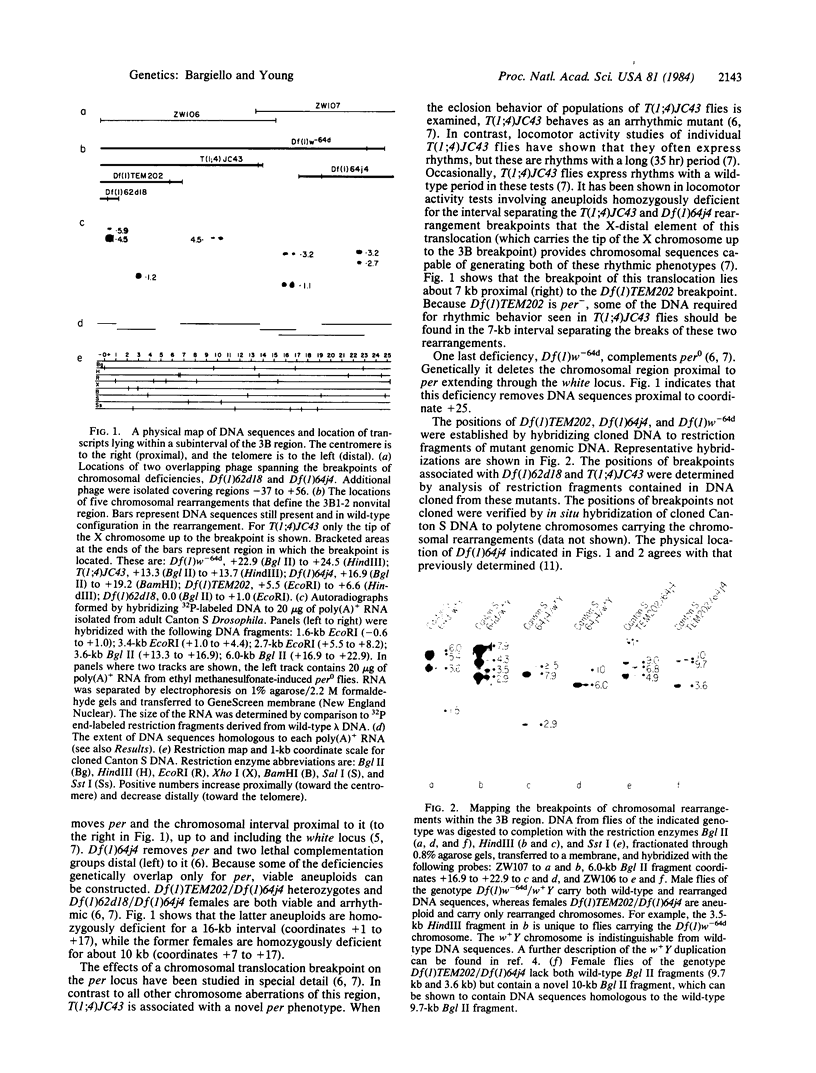
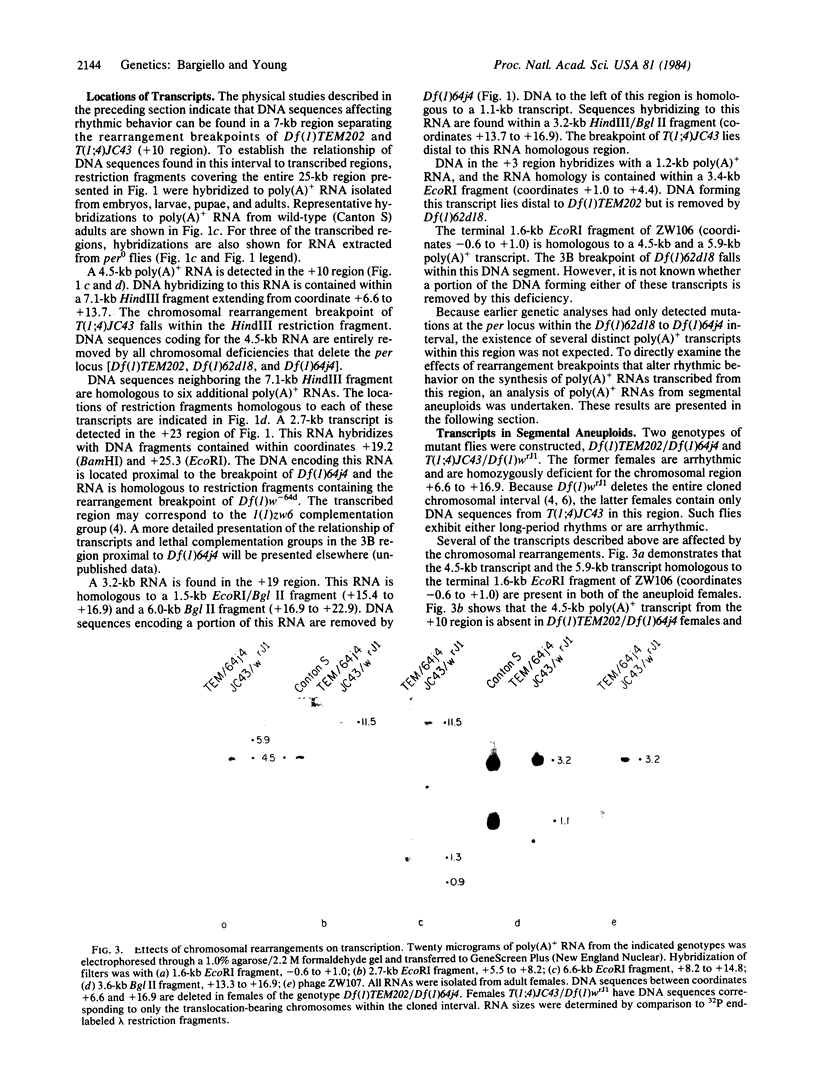
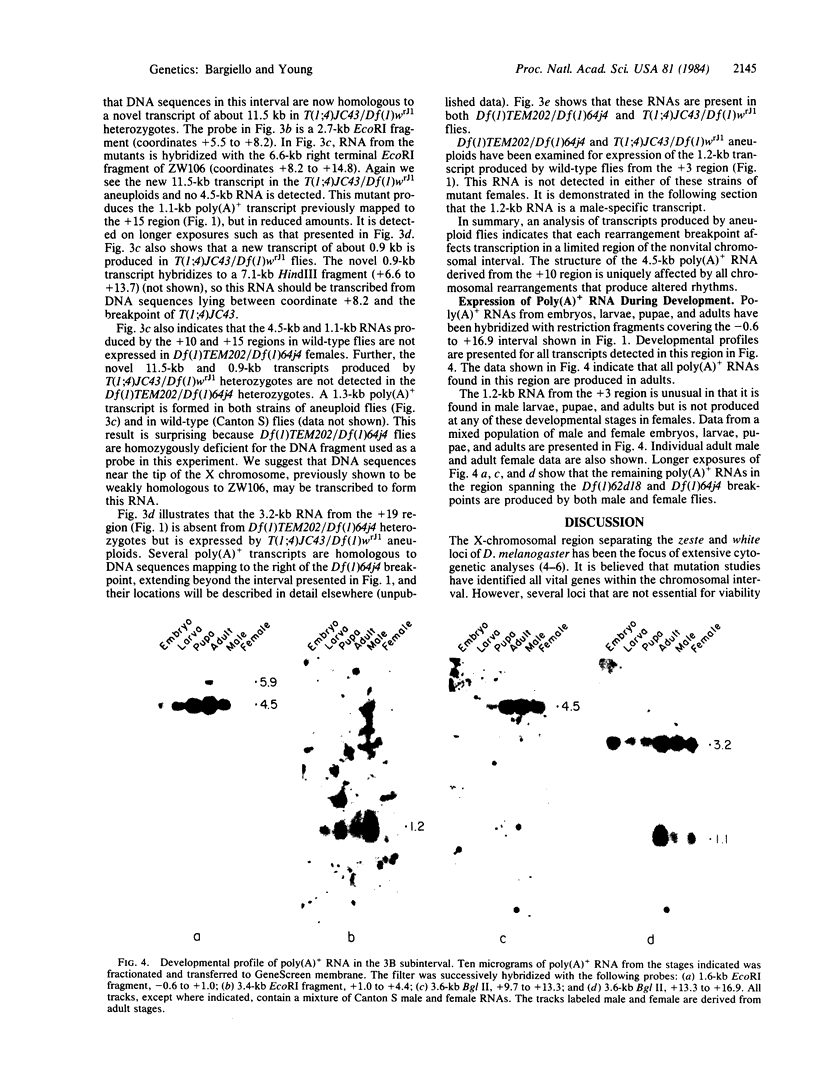
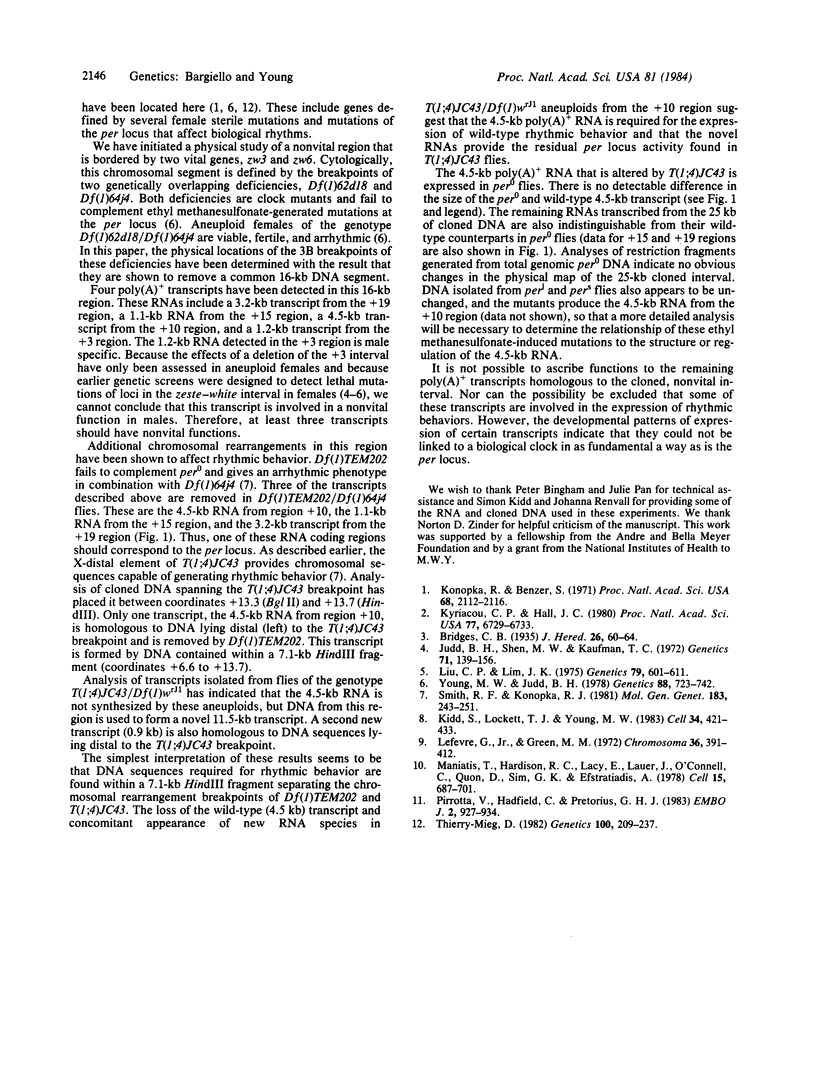
Images in this article
Selected References
These references are in PubMed. This may not be the complete list of references from this article.
- Judd B. H., Shen M. W., Kaufman T. C. The anatomy and function of a segment of the X chromosome of Drosophila melanogaster. Genetics. 1972 May;71(1):139–156. doi: 10.1093/genetics/71.1.139. [DOI] [PMC free article] [PubMed] [Google Scholar]
- Kidd S., Lockett T. J., Young M. W. The Notch locus of Drosophila melanogaster. Cell. 1983 Sep;34(2):421–433. doi: 10.1016/0092-8674(83)90376-8. [DOI] [PubMed] [Google Scholar]
- Konopka R. J., Benzer S. Clock mutants of Drosophila melanogaster. Proc Natl Acad Sci U S A. 1971 Sep;68(9):2112–2116. doi: 10.1073/pnas.68.9.2112. [DOI] [PMC free article] [PubMed] [Google Scholar]
- Kyriacou C. P., Hall J. C. Circadian rhythm mutations in Drosophila melanogaster affect short-term fluctuations in the male's courtship song. Proc Natl Acad Sci U S A. 1980 Nov;77(11):6729–6733. doi: 10.1073/pnas.77.11.6729. [DOI] [PMC free article] [PubMed] [Google Scholar]
- Lefevre G., Jr, Green M. M. Genetic duplication in the white-split interval of the X chromosome in Drosophila melanogaster. Chromosoma. 1972;36(4):391–412. doi: 10.1007/BF00336795. [DOI] [PubMed] [Google Scholar]
- Liu C. P., Lim J. K. Complementation analysis of methyl methane-sulfonate-induced recessive lethal mutations in the zeste-white region of the X chromosome of Drosophila melanogaster. Genetics. 1975 Apr;79(4):601–611. doi: 10.1093/genetics/79.4.601. [DOI] [PMC free article] [PubMed] [Google Scholar]
- Maniatis T., Hardison R. C., Lacy E., Lauer J., O'Connell C., Quon D., Sim G. K., Efstratiadis A. The isolation of structural genes from libraries of eucaryotic DNA. Cell. 1978 Oct;15(2):687–701. doi: 10.1016/0092-8674(78)90036-3. [DOI] [PubMed] [Google Scholar]
- Pirrotta V., Hadfield C., Pretorius G. H. Microdissection and cloning of the white locus and the 3B1-3C2 region of the Drosophila X chromosome. EMBO J. 1983;2(6):927–934. doi: 10.1002/j.1460-2075.1983.tb01523.x. [DOI] [PMC free article] [PubMed] [Google Scholar]
- Smith R. F., Konopka R. J. Circadian clock phenotypes of chromosome aberrations with a breakpoint at the per locus. Mol Gen Genet. 1981;183(2):243–251. doi: 10.1007/BF00270625. [DOI] [PubMed] [Google Scholar]
- Thierry-Mieg D. Paralog, a control mutant in Drosophila melanogaster. Genetics. 1982 Feb;100(2):209–237. doi: 10.1093/genetics/100.2.209. [DOI] [PMC free article] [PubMed] [Google Scholar]
- Young M. W., Judd B. H. Nonessential Sequences, Genes, and the Polytene Chromosome Bands of DROSOPHILA MELANOGASTER. Genetics. 1978 Apr;88(4):723–742. doi: 10.1093/genetics/88.4.723. [DOI] [PMC free article] [PubMed] [Google Scholar]



